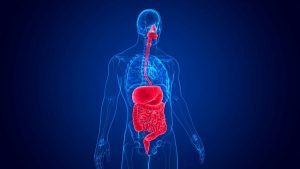As the toll of the COVID-19 pandemic grows, it is increasingly clear the infection is more than a lung disease. Many patients are developing heart complications, though the reasons are not fully understood.
People with heart disease or a history of stroke are at increased risk of the coronavirus infection, and of suffering more severe symptoms, according to the American Heart Association (AHA).
But those severe infections are not only damaging people’s lungs. Doctors are also seeing injuries to the heart — from heart attack, to inflammation of the heart muscle, to potentially fatal heart arrhythmias.
The precise causes are still being sorted out. And they could be both “direct and indirect,” said Dr. Sahil Parikh, a cardiologist at Columbia University Irving Medical Center in New York City.
Indirectly, he explained, the overall stress of being critically ill — with lung disease that is robbing the body of oxygen — can exact a toll on people with existing heart problems.
On top of that, there may be particular effects of COVID-19, according to Dr. Robert Bonow, a cardiologist at Northwestern University Feinberg School of Medicine in Chicago.
The coronavirus has proteins that attach to certain receptors in lungs. As it happens, blood vessel cells have those same receptors, Bonow explained. It’s thought that the infection may sometimes directly damage blood vessels, which can cause blood clots that lead to a heart attack.
Another heart complication seen in COVID-19 is myocarditis, an inflammation of the heart muscle.
The cause is unclear, with some researchers speculating the coronavirus may sometimes directly infect the heart. But at this point, Parikh said, actual evidence of that “isn’t great.”
Another possible culprit is the immune system’s response against the virus. When it fires out of control — a severe inflammatory reaction known as a cytokine storm — it can damage organs throughout the body, including the heart.
How common are heart complications?
In a study published last month in JAMA Cardiology, doctors at a hospital in Wuhan, China, reported that “cardiac injury” was common in their experience. Among 416 patients hospitalized for severe COVID-19, about 20% suffered a heart injury. More than half of those patients died.
Heart injury was defined as very high levels of a protein called troponin, which is released into the bloodstream when the heart muscle is damaged.
In the United States, where hospitals are in the midst of the COVID-19 “peak,” it’s not known whether the numbers are similar to the Wuhan study, according to Parikh.
“It’s hard to say what the percentages are,” he said, “but a similar spectrum [of heart complications] is being seen.”
For the most part, the complications have struck people with established heart disease or risk factors for it, such as high blood pressure.
“It’s rare that these patients have no cardiovascular risk factors,” Parikh said.
In New York City, the nation’s pandemic epicenter, another consequence has emerged: A surge in 911 calls for cardiac arrest — a heart arrhythmia that is quickly fatal without emergency treatment.
Last week, the city’s Fire Department said calls for cardiac arrest had shot up: From March 20 to April 5, the city averaged 195 cardiac arrest calls per day, compared to 65 per day for the same period last year, NBC News reported.
It’s hard to know, Parikh said, how many of those victims had COVID-19. People fearful of hospitals may decide to “tough it out” if they develop the warning signs that can precede cardiac arrest, like shortness of breath, dizziness and heart palpitations.
“People dying of cardiac arrest at home are victims of COVID-19,” Parikh said, “though not necessarily directly.”
It’s critical that no one — especially people with known heart disease — ignore symptoms, said Dr. J. Wells Askew, a cardiologist at the Mayo Clinic in Rochester, Minn.
That means calling your doctor if you think you have coronavirus symptoms, like fever and coughing, or 911 if you have difficulty breathing or chest pain.
Askew acknowledged that when those patients arrive at the hospital, it can be difficult to know if it’s a heart attack or COVID-19.
Parikh agreed, saying, “A few months ago, we would’ve said if it looks like a duck, then it’s probably a duck.” And that would often mean rushing the patient to the catheterization lab for an invasive procedure to confirm a heart artery is blocked — and then to clear the blockage.
“Now we’re taking a step back, to evaluate whether this is someone at high risk of COVID-19,” Parikh said.
In general, he noted, New York hospitals are trying to limit invasive procedures to emergency situations, to protect both patients and providers.
There are alternatives, Askew said. Patients’ symptoms and medical history, along with imaging tests like ultrasound, can help doctors figure out whether a heart artery is truly blocked.
Like the pandemic, the understanding of COVID-19’s heart consequences is evolving — with doctors using technology to stay up to date. Parikh said he’s part of a WhatsApp group of about 150 area cardiologists who are continually sharing what they’re learning.
More information
The American Heart Association has a COVID-19 hub.
Source: HealthDay
Copyright © 2025 HealthDay. All rights reserved.

















